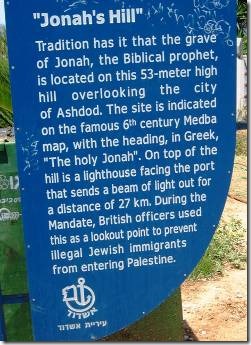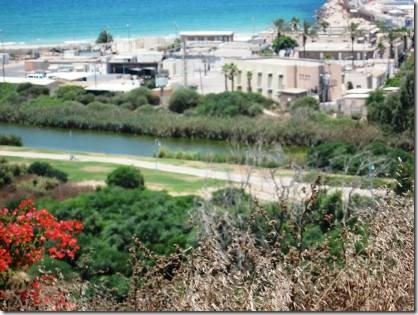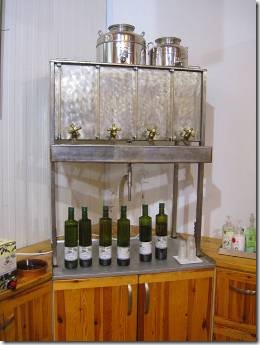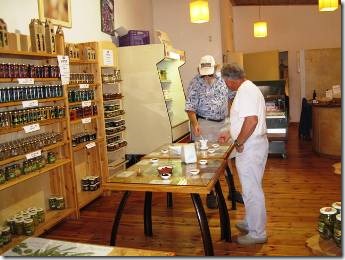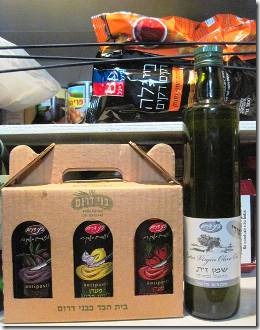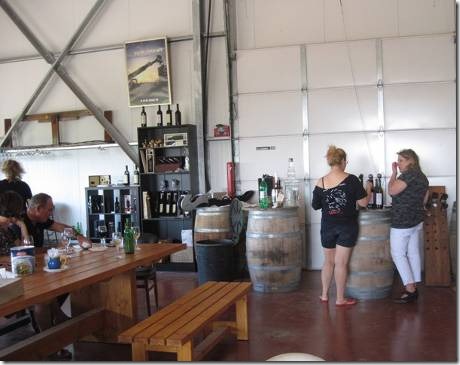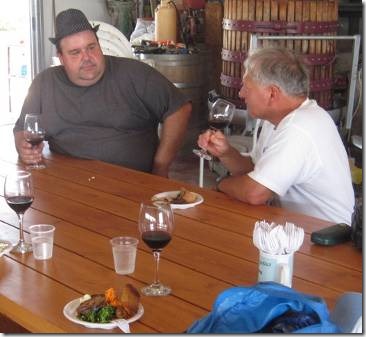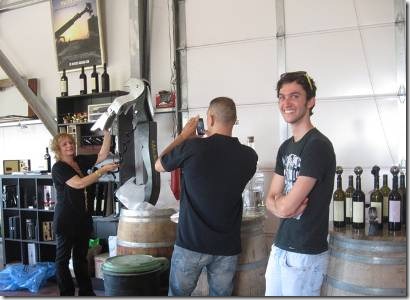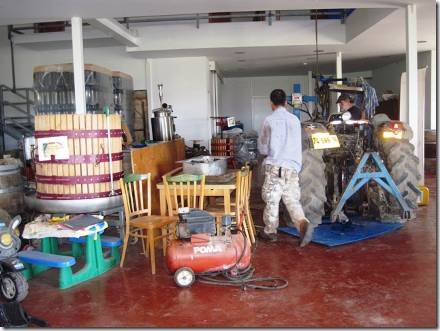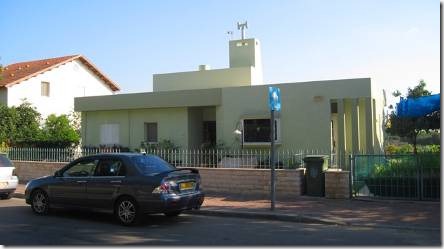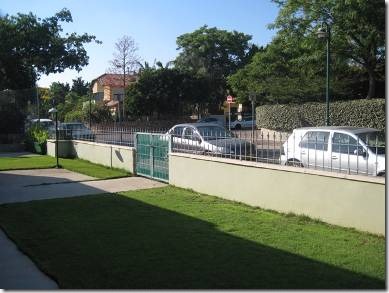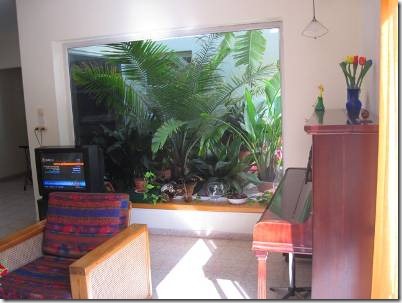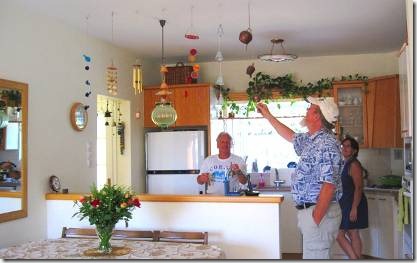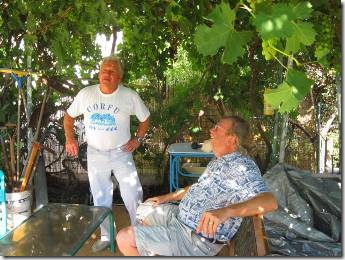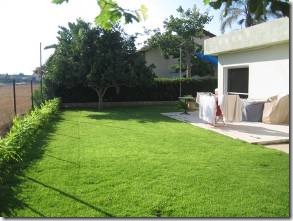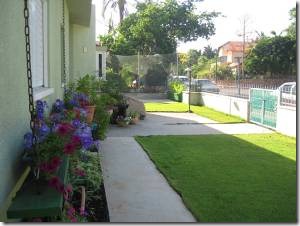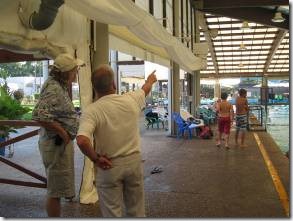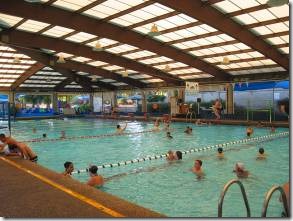Merhaba,
I am trying to relearn the Turkish Denise tried so hard to teach me. I’m not having to start from go on the vocabulary, but the grammar….hmm. I did remember, out of the blue, what to say when someone sneezes. Our friends, my walking buddy Sharman and her partner Cliff are at Yacht Marine down the road doing two months of boat work. They will return to Cyprus mid August. Tomorrow we are all driving to Bodrum in our small rental car to check out the boat yard there. At some point we need to pull our boat and repaint the bottom so we are checking different yards. It’s great to get to spend time with them and we’ll be sorry when they return to Cyprus.
Randal and I went for an early morning walk along the coast before it got too hot, but then walked back to town to check about phone service rates. Nothing about anything is seeming as simple as it was our last visit; but that’s a story for a different email. I still have lots to share about Israel. I will write a bit about Marmaris next though, just to refresh your memories from our visit here last April-July 2011.
This email is about our Israeli friend Avi from Aseret.
Ru
Israel: Our day with Avi
While in Israel we had several people come look at DoraMac, oddity that she is in the cruising community. Most cruisers have sailing boats, so the sight of a diesel trawler in a marina is a rarity. One of our visitors in Ashdod was Avi (short for Avraham – Abraham.) Eve was visiting that evening and they established that one of her relatives lived near him..or something along those lines that always seemed to happen in Israel. Avi mentioned a winery that did Friday lunch time tastings and suggested that we try it. However, after our Saturday ride to Tel Aviv, even with the reduced Sabbath traffic, Randal wasn’t keen on motorbiking on the main roads of Israel. So one Friday, not long after his visit, Avi offered to come get us and Eve. Eve was away in Berlin cleaning out her daughter’s apartment, so it was just Randal and me.
We met Avi about noon in the marina parking lot. As we’d never really taken the time to visit it, our first stop was Jonah’s Hill overlooking Ashdod Port. Avi pointed out the greenway path along the Lachish River and suggested that Randal and I take the motorbike there…which we did a few days later. We also tried out the restaurant up on the hill for lunch one day.
It seems everything in Israel has either a biblical connection or modern military connection.
Nachal Lachish Park : The Greenway along the river that runs along the coast near Ashdod Port.
This would be a great place for Charmaine and Linda during bird migration seasons. As it was, the only time Randal and I took the motorbike it was broiling hot, so not so appealing for riding. There were lots of picnickers in the shady spots or fishing along the river. It’s kind of like the Roanoke River Greenway except for the small zoo and the sculptures and monuments. We really didn’t do the park justice, but it was just the wrong time of year when it was just too hot to spend time along the un-shaded path.
Nachal Lachish Park http://littmann613.blogspot.com/2012/04/nachal-lachish-park.html
“The source of the Lachish River is a natural spring in the Chevron Hills. From there, the river stretches 70 kilometers until it circles the city of Ashdod and flows into the Mediterranean Sea. Winding along the side of the south bank of the Lachish River is the large, well-kept Lachish Park.
The pollution from the city’s sewage and industrial waste in the river’s water plagued Ashdod’s residents for years. The mouth of the river was clogged up, and the historic sites nearby were in a state of neglect. As part of an intensive restoration project of the river and its surroundings, initiated in 1991 by several organizations, the discharge of sewage from Ashdod into the river was stopped. (The tall power plant stacks spew steam, not smoke.) The area of and around the stream was cleaned up and underwent renovation and rehabilitation.
Established in 1996, Lachish Park was the culmination of these efforts to salvage the mouth of the Lachish River. A project of riverbank stabilization, using different types of vegetation that are well integrated with the landscape, was successfully implemented.
All this enabled numerous species of wildlife, fish, and birds to return to the site. The calls of numerous water birds that rest here during the migratory period fill the air, as fresh winds from the sea blow into the park. Now, unique fauna, waterfowl, and amphibians can be observed as the stream empties into the Mediterranean Sea.
The park was landscaped and comprises prepared lawns, a 2.5 km promenade, observation points, shady alcoves, playgrounds and picnic sites. A small zoo with antelope, zebra, ostriches, and native Israeli deer lines the back of the park and will delight children. There is even a cage of peacocks.
Many works of art in stone and marble dot the park. One bench has the heads of lions as its armrests. Among the collection is an enormous bitten into apple made of granite, as well as a great, white marble bird.
One can stroll along the riverbed in either direction for about 750 meters, resting under attractive pergolas or walk a bit down to the docks. This part of the park is wheelchair accessible and includes lawns, picnic tables and water for washing. The magnificent riverside walk offers an astounding amount of greenery. The substantial river foliage includes reeds, cattails and tamarisk trees, as well as a huge number of castor-oil plants with large, palm-shaped leaves.
An assortment of fruit trees — including carob and date palms; huge, knotty tamarisks; and small sycamores — were planted on the banks. A slight distance from the edge of the water, fig trees grow naturally. Park Lachish Ashdod is a nature reserve for the prickly white acacia tree, whose name derives from its cream-colored trunk.
A number of modern-day granite obelisks, a reminder of the withdrawal from Sinai after Israel signed a peace treaty with Egypt in 1979, are found at the entrance of the park. The pillars of stone, built especially as monuments, have square bases and sides that taper like a pyramid towards a pointed top.
Directions to Nachal Lachish Park: The park is situated near the Ashdod port. Take Route 41 west, and
make a left onto Bnei Brit Boulevard. At the third traffic light, make a right onto Ben Gurion. After the second traffic light, go around the traffic circle, and the parking lot will be on your right. Leave your vehicle in the lot and walk on the asphalt down to the paved paths.
The Lachish River walk is also accessible by way of Highway 4. Turn toward the sea at the Bnei Darom
Junction and follow Highway 41 into Ashdod and all the way down to the water. Turn left at the port, then follow the signs to the park.”
Our next stop was to be the Kahanov winery. Instead, because it was sort of on the way, we made another detour to an olive oil producing kibbutz.
Bnei Darom : Sons of the South for an Olive Oil tasting.
Bnei Darom בְּנֵי דָּרוֹם Sons (בְּנֵי Bnei) of the South (דָּרוֹם Darom) You read Hebrew from right to left so you see the modifier come before the nouns.
Bnei Darom is one of the more religious kibbutzim, so the fact that we arrived the last hour they were open Friday maybe wasn’t the best time to visit. It was a spur of the moment stop as we were really on our way to the non-religious Kahanov winery for their Friday buffet lunch/wine tasting. We did take the time to taste some olive oil and some vegetable spreads and saw a brief movie about the special process this kibbutz uses to press its olives. Then it was time to go. Other days and times they offer more tours around the kibbutz.
Olive Oil Tasting!
I’ve been to wine tastings, but never olive oil. There really are lots of different flavors. The first one I tasted really surprised me. The aftertaste had a real kick! I would have gotten some, but you had to buy a giant tin of it and I wasn’t sure how well it would do in our closed up boat from mid-September until mid-November. I like the taste of olive oil so I picked one with a rather strong taste. We learned that you should never buy olive oil sold in plastic containers or clear glass. Apparently you should only store olive oil in dark glass or non-reactive metals. I love the giant colorful olive oil tins that folks in the Med use for planters when the oil is all gone.
Keeping Olive Oil Fresh
By Camilla Brown
“Fresh extra virgin olive oil delivers a wonderful flavor and legendary health benefits. To ensure that your olive oil maintains optimum freshness and flavor, there are a few things you can do to store it properly.
Avoid Heat, Light, and Air
When olive oil is exposed to heat, light, and air the valuable nutrients in the oil begin to oxidize and it will begin to lose its fruit flavors. When buying extra virgin olive oil, look for those packaged in opaque or tinted glass. Or, try pouring olive oil into a clean used red wine bottle equipped with a spout. Do not store olive oil in plastic containers, as the oil can leach harmful substances out of the plastic.
Store your olive oil in a kitchen cabinet or another cool, dark location such as a basement or wine cellar. Keep a small container of olive oil within easy reach, and the rest of your supply tucked away to avoid repeated exposure to air. Make sure the lids of your containers fit tightly, and never store olive oil next to the stove, where it will invariably be exposed to heat.
Don’t Store Olive Oil Too Long
Olive oil should be consumed within two years of pressing. Any longer, and the flavors deteriorate and the nutrients degrade. Every month that olive oil ages, the acidity levels increase, a result of oxidization. Extra-virgin olive oils have the potential to last longer than other grades because they have a lower acidity. Buy your olive oil fresh from a supplier, or specialty retailer with high turnover. Pick a bottle from the back of the shelf where it has been shielded from harsh lights. Check the date of pressing if there is one, and abide by expiration dates.
Maybe most importantly, use extra virgin olive oil liberally. You’ll have a healthier diet and your supply will always be fresh.” http://www.oliveoiltimes.com/whats-cooking-with-olive-oil/keeping-olive-oil-fresh/878
Avi and Randal sample other kibbutz products.
In our pantry on the boat, along with some Israeli pretzel chips: eggplant, lemon with garlic, and tomato spreads and a bottle of olive oil. Can’t wait to break into these, but have to finish off a few open jars in the fridge first.
I was thinking as I took the photo that we have food in the pantry from at least 4 or 5 countries. Of course a couple, like the blueberry pie filling from our first trip to Rebak Marina in Langkawi, Malaysia, expired 18 months ago…perhaps time for it to go. We bought the olive oil because we’d just finished up the last bits of the wonderful stuff our friends Heidi and Kalle gave us in Cyprus.
http://szcnsw.auton.telligence.net.au/blog/?p=166
הבלוג הציוני אוסטרלי Bnei Darom Olives – a good choice
February
“If you try to buy at least one item from Israel each time you are in the supermarket, an excellent purchase is Bnei Darom green or black olives. The olives are exported to Australia and elsewhere by Bnei Darom, a religious moshav not far from the southern port of Ashdod.
Every place in Israel has a history and Bnei Darom is no exception.
History: South of Bnei Darom in what is now Gaza, Kfar Darom was founded in 1930 on 250 dunams of land purchased by Tuvia Miller for a fruit orchard on the site of an ancient Jewish settlement of the same name mentioned in the Talmud. In 1946, Miller sold his land to the JNF (Jewish National Fund) a community was established by Hapoel HaMizrachi’s kibbutz movement as part of the 11 points in the Negev settlement plan.
The next part of this article seems to me to be as much opinion as fact……
In the summer of 1948, Kfar Darom was abandoned following a prolonged siege by the Egyptian army during the 1948 Arab-Israeli War. A book “The 222 Days of Kfar Darom”, which details the heroism of Kfar Darom, was published in 2007 by military historian Aryeh Yitzhaki of Efrat. Originally in Hebrew, it was recently translated into English. For eight and a half months, several dozen young men and women, under almost complete siege and suffering from terrible hunger and thirst, faced the local Arab enemy and the invading Egyptian army. Most of the defenders were religious kibbutzniks, reinforced by Palmah fighters.
Some of those who were forced out of Kibbutz Kfar Darom then established Bnei Darom in its current location near Ashdod. Currently about 400 people live on Bnei Darom and it is thriving.
Meanwhile, following Israel’s victory in the Six-Day War and its subsequent occupation of the Gaza Strip, a Nahal military outpost was established at the original Kfar Darom site in 1970. In 1989, this was converted to a civilian community by the Israeli government. Prior to the withdrawal from Gaza in 2005, there were about 60 families, totaling about 330 people, who earned their living particularly from agriculture, and a central packing center for the world renowned insect-free vegetables produced by the Gaza Jewish communities. Kfar Darom became a symbolic last stand by the Israeli settlers and their supporters in August 2005. Many settlers from Gush Katif, as well as other supporters from the rest of Israel and abroad, mostly religious youth, concentrated themselves in the synagogue. After a bitter struggle, the people were removed by Israeli soldiers. Following the eviction and Israeli withdrawal, Palestinians razed the synagogue. Many of the Kfar Darom people have since struggled to reestablish themselves, with inadequate support.
Location of Bnei Darom:
To get to Bnei Darom: Near Ashdod on Route 41, just east of Route 4. Entrance to Bnei Darom on side of Route 41.
At Moshav Bnei Darom, a communal agricultural settlement of the National Religious Movement, the olive industry is booming. Most of the olives are harvested from trees grown south of the moshav in the desert and irrigated with 10,000 year old underground well-water. The oil, however, is cold pressed at Bnei Darom. Visitors to the olive press learn about the qualities, history and properties of the olive fruit, as well as how to identify real olive oil.
Olive Tour – A Bnei Darom highlight A tour includes the visitors’ center, with a film of how olive oil is produced, and a visit to a modern olive-oil factory. Afterward, people are given an opportunity to produce their own olive oil with a reconstructed ancient press. There are also tractor rides and arts and crafts projects during Chanukah.
Kad Bnei Darom is a family operation on the moshav. It is the only Israeli mill to produce olive oil using the Italian Rappanelli Sinolea olive oil extraction process. In addition to olives, the company makes canned cucumbers, peppers and egg plant.
Uses for olive oil……
*Besides the olive branch being the symbol of peace, olive is one of the seven species of the Land of Israel. Since ancient times, Jews in different cultures have used olive oil for medicinal purposes. Folklore relates that the Rambam drank a glass of olive oil each morning.
* Indian Jews smeared babies with olive oil before bathing the child to strengthen skin and bones.
* Syrian Jews recommended that pregnant women drink olive oil for good luck.
* Tunisian and Algerian Jews used olive oil for massage and prevention of back ache.
* Morrocan Jews recommended olive oil to ease joint pains. Coughing babies were given a mixture of olive oil and honey.
* Iraqi Jews believed that a daily tablespoon of olive oil prevented headaches, loss of appetite, sleeplessness, and digestive ailments.
* Yemenite Jews rubbed olive oil on the head to prevent hair loss and dandruff. A daily spoonful prevented the flu.
* Ashkenazi Jews dripped warmed olive oil into aching ears.
SO next time you are shopping, have a look for Bnei Darom olives!!
Then it was off to the winery where Randal and I were more interested in tasting the food than the wine. We’d eaten breakfast before 7 am and it was about 1:30 by the time we arrived at the winery.
Kahanov Winery….http://winefromisrael.co.il/wineries/kahanov-vineyards/
“Eliezer Kahanov came from Europe to Gedera as a pioneer in the early twentieth century and planted his first vineyard. Legend has it that at the end of that century while he was kneeling and planting a new vineyard, a man approached him and asked: “You are almost a hundred years old, do you think you will harvest the grapes of this vineyard”.
Eliezer raised his kind eyes and answered: “If I won’t, then my son will.If not my son, my then grandson”.
Indeed, Eliezer did not live to harvest the grapes of this vineyard, but his son and grandson did.
And it is they who follow his legacy of knowledge, experience, tradition and love.
The Kahanov winery is a family winery located in the heart of the family vineyards.The high quality vineyard and the winery providing a picturesque and pastoral atmosphere compatible to the experience of visiting the site. The Winery grapes are only one percent of the family crop, enabling the selection and careful choosing of the grape clusters which make Kahanov’s wine so special and unique.
These wines are produced using traditional methods and state-of-the-art equipment, this production reflecting the winery and its wines – a new world but deeply rooted in a long tradition.
Each bottle receives warm and particular attention from Kahanov family members, who personally produce each one of them.
The family’s deep familiarity with vineyards allows an intimacy with each acre and variety of grape – it is such intimacy and love that have created the miracle of the Kahanov Winery and the Kahanov wines.
Kahanov winery’s flagship wines are noble Cabernet and Merlot varieties. These wines age for a long time in oak barrels in order to maintain and enhance the quality of the wine.
These wonderful wines have won prestigious awards and medals in many competitions and exhibitions worldwide. “
Winery Website: http://www.kahanov.co.il/
Inside one of the work buildings that was part lunch room/ wine tasting room and garage as you will see.
I love the hat! Liked the wine and the different meze and shakshuka that made up lunch.
Avi and I believe one of the grandsons of Eliezer Kahanov who started the winery in the 30s.
Randal needed to buy some chemicals to pickle our water-maker and hadn’t any luck in Ashdod. Wineries use the same chemicals to clean their vats. “Grandson Kahanov” was able to tell Avi where it could be obtained and Avi was kind enough to go get some and bring it to the boat the following Thursday.
A giant sized corkscrew, can opener used in a winery ad.
While we were eating, this tractor was being repaired. Everyone cheered when the engine started up.
From the winery we went to visit Avi’s home in Aseret.
Aseret From Wikipedia, the free encyclopedia
Hebrew עֲשֶׂרֶת
Name meaning Ten (after ten members of Bilu)
Founded 1954
Aseret (Hebrew: עֲשֶׂרֶת) is a communal settlement near Gedera on the coastal plain of south-central Israel. It belongs to the Gederot Regional Council. The word "Aseret" means ten, and the community is named after the ten members of Bilu who founded Gedera.
The community was founded in 1954 as the municipal center of the Gederot Regional Council. It continues to serve this function today. Aseret is the center, both geographically and municipally, of the
other six communities in the council: Meishar, Misgav Dov, Kfar Aviv, Kfar Mordechai, Shdema and Gan HaDarom.
Aseret is built on the ruins of an Arab village Bashshit, which was destroyed in the 1948 Arab-Israeli War. There is an old grave that some people associate with Seth, the son of Adam in the Hebrew Bible.
BILU http://www.jewishvirtuallibrary.org/jsource/Zionism/bilu.html
The year the pogroms began in Russia, 1881, is the year Russian Jews started emigrating in large numbers to the United States. A smaller number of them, however, turned their eyes toward Zion; in 1882, several thousand Russian Jews emigrated to Palestine. Prior to this, most Jews who made aliyah to Israel did so for religious reasons; it was considered meritorious, for example, to die in the Holy Land. Living in Palestine, however, was considerably harder. It was an impoverished land, many — if not most — of whose Jewish inhabitants depended on worldwide Jewish charitable contributions.
In 1882 also, a new Jewish organization was founded that had a very different scenario in mind for Jewish life in Israel. The group was called BILU, an acronym based on a verse from Isaiah (2:5), "Beit Ya’akov Lekhu Ve-nelkha/Let the house of Jacob go!" BILU’s founders believed that the time had come for Jews not only to live in Israel, but to make their living there as well.
The Bilu’im were influenced by Marx as well as the Bible, and hoped to establish farming cooperatives in Palestine. For the fourteen ex-university students who comprised the first group of Bilu’im, farming represented a complete change of lifestyle. (Because Jews had been forbidden to own land in Russia, the country had almost no Jewish farmers.) Arriving in Palestine with enormous "funds" of good will and energy, but with little money and experience, the Bilu’im found life very difficult. Two Palestinian Jews who had already raised money to buy land gave the group a tract to set up a farm in the settlement of Rishon Le-Zion. Within a few months, the Bilu’im faced starvation, and most had to leave.
A few years later, the eight members of the group who had remained in Palestine were offered land in G’dera. Here they struggled against both difficult farming conditions — meals eventually consisted only of radishes and potatoes — and Arab marauders. "They violated our boundaries," one of the Bilu’im recorded in his diaries, "and dispossessed us of whole tracts of our land — and we were helpless." Ironically, the G’dera outpost was eventually saved through the philanthropic efforts of one of the arch-capitalists of the Jewish world, Baron Edmund de Rothschild of France. The dispirited, and by now demoralized, Bilu’im soon left the settlement. Some went to other parts of Palestine, others returned to Europe.
Although the BILU movement, failed completely its vision of Jewish cooperative farms was carried out very successfully a few decades later by the kibbutz and moshav movements. Ever since, the BILU dream of Jews living and supporting themselves in their own homeland has been regarded as one of the important forerunners of the international Zionist movement which Theodor Herzl organized fifteen years later.
SOURCES AND FURTHER READINGS: Howard M. Sachar, A History of Israel, pp. 26-32.
Source: Joseph Telushkin. Jewish Literacy. NY: William Morrow and Co., 1991. Reprinted by permission of the author.
The home of Avi, his wife Rohamah, and their two daughters.
Looks like any place in the USA
I loved the glass wall and the lush foliage.
Avi’s collection of wind chimes in the kitchen.
Avi is pretty much retired: Rohamah is the principal of an elementary school.
Both their daughters completed the 2 years of military service.
A grape arbor creates a shady patio in the back yard.
I asked, “ Why spend all that time and effort, in the desert, to make a lawn you then have to mow?”
Avi’s answer was that the kids liked playing on the lawn and he likes maintaining the lawn and plants.
Avi pointing out how the covered ceiling in over the community pool provides for year round swimming.
Aseret has a community center with a gym and pool, schools, a library, a health and dental clinic and a retirement community for the “elderly.” It’s like one of those ideal places to live; except for the need for a safe room with the shrapnel preventing window cover.
Editorial comment.
At dinner the other night with friends we were talking about Israel and I realized that I have less of an open mind about the issues there than before Randal and I visited. I remember “discussing/arguing” with my parents back in the 70s after they’d been to Israel and were so impressed. I kept insisting that there were two sides and Israel hadn’t always treated the Arabs so well and needed to do better. My mother got angry and told me I’d feel differently if I’d go there; that I’d have more respect for what the Israeli people have accomplished. Turns out something else mom was right about. Maybe it will ware off and I’ll regain some perspective. I know I lost my taste for pork in Israel, though I did eat calamari here in Turkey the other night. So anyway, if some of my emails seem one-sided about Israel, I will accept the criticism.

